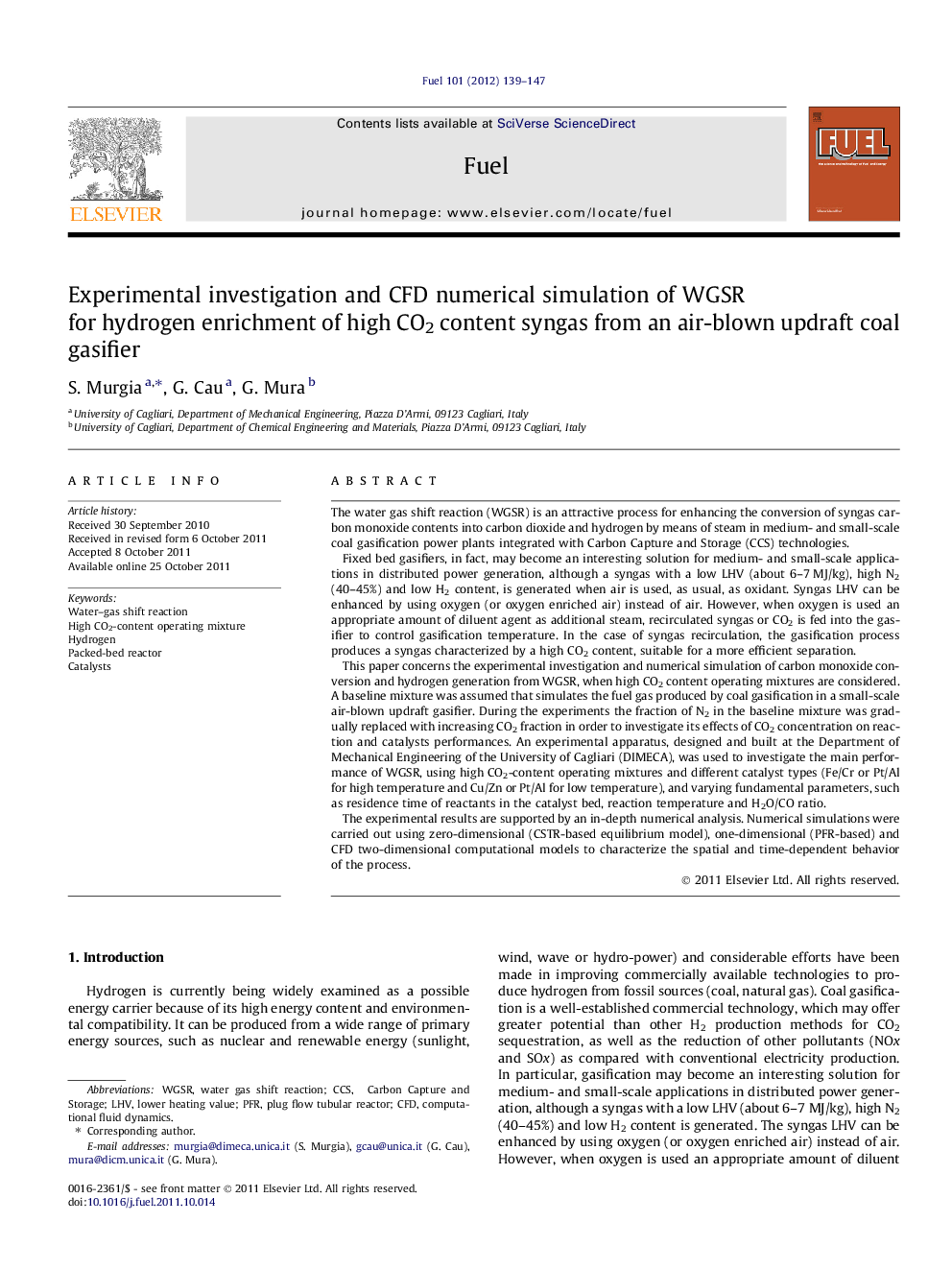| Article ID | Journal | Published Year | Pages | File Type |
|---|---|---|---|---|
| 206373 | Fuel | 2012 | 9 Pages |
The water gas shift reaction (WGSR) is an attractive process for enhancing the conversion of syngas carbon monoxide contents into carbon dioxide and hydrogen by means of steam in medium- and small-scale coal gasification power plants integrated with Carbon Capture and Storage (CCS) technologies.Fixed bed gasifiers, in fact, may become an interesting solution for medium- and small-scale applications in distributed power generation, although a syngas with a low LHV (about 6–7 MJ/kg), high N2 (40–45%) and low H2 content, is generated when air is used, as usual, as oxidant. Syngas LHV can be enhanced by using oxygen (or oxygen enriched air) instead of air. However, when oxygen is used an appropriate amount of diluent agent as additional steam, recirculated syngas or CO2 is fed into the gasifier to control gasification temperature. In the case of syngas recirculation, the gasification process produces a syngas characterized by a high CO2 content, suitable for a more efficient separation.This paper concerns the experimental investigation and numerical simulation of carbon monoxide conversion and hydrogen generation from WGSR, when high CO2 content operating mixtures are considered. A baseline mixture was assumed that simulates the fuel gas produced by coal gasification in a small-scale air-blown updraft gasifier. During the experiments the fraction of N2 in the baseline mixture was gradually replaced with increasing CO2 fraction in order to investigate its effects of CO2 concentration on reaction and catalysts performances. An experimental apparatus, designed and built at the Department of Mechanical Engineering of the University of Cagliari (DIMECA), was used to investigate the main performance of WGSR, using high CO2-content operating mixtures and different catalyst types (Fe/Cr or Pt/Al for high temperature and Cu/Zn or Pt/Al for low temperature), and varying fundamental parameters, such as residence time of reactants in the catalyst bed, reaction temperature and H2O/CO ratio.The experimental results are supported by an in-depth numerical analysis. Numerical simulations were carried out using zero-dimensional (CSTR-based equilibrium model), one-dimensional (PFR-based) and CFD two-dimensional computational models to characterize the spatial and time-dependent behavior of the process.
